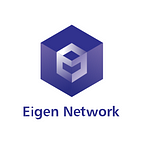BN254 vs BLS12381
Comparing the elliptic curve BN254 and BLS12381 involves looking at their cryptographic parameters, efficiency, and application suitability. Both curves are widely used in cryptographic protocols, including zero-knowledge proofs and pairing-based cryptography. Here’s a detailed comparison:
1. Cryptographic Parameters
- BN254: This is a Barreto-Naehrig (BN) curve, offering a 128-bit security level. It’s characterized by a relatively small field size, which makes operations like pairing faster but with lower security margins compared to larger curves. The BN254 curve is defined over a prime field with the prime close to 2^{254}.
- BLS12–381: Introduced to improve upon the security and efficiency of previous BN curves, BLS12–381 is also a Barreto-Lynn-Scott (BLS) curve, but with a 128-bit security level similar to BN254. However, it uses a larger field size, approximately 2^{381}, enhancing its resistance to future cryptographic attacks, such as those from quantum computers.
2. Efficiency
- BN254: Known for its high efficiency in terms of computation time, especially for operations like bilinear pairings, which are crucial for certain types of cryptographic constructions such as identity-based encryption and zero-knowledge proofs. Its smaller field size leads to faster computations but at the expense of a lower security boundary compared to larger curves.
- BLS12–381: While operations on BLS12–381 are generally slower due to its larger field size, this curve offers a better balance between security and performance, particularly in the context of newer cryptographic applications like those in blockchain technologies (e.g., Ethereum 2.0). Its efficiency is optimized for specific cryptographic tasks, making it suitable for high-security environments.
3. Use Cases
- BN254: Often preferred in environments where speed is crucial and the security requirements are within the 128-bit level. It’s commonly used in blockchain applications requiring efficient processing of zero-knowledge proofs, such as in certain privacy-oriented protocols.
- BLS12–381: Its use has been popularized by its adoption in consensus mechanisms and in creating cryptographic signatures that support aggregation (useful for blockchain transactions). Its security features make it a preferred choice in systems that prioritize long-term resistance against cryptographic attacks, including potential threats from quantum computing.
4. Security
- BN254: While still considered secure for many applications, its smaller parameter size could potentially make it more susceptible to advances in cryptanalysis and quantum computing.
- BLS12–381: Designed to offer enhanced security against both current and emerging cryptographic attacks. The larger parameters provide a buffer against reductions in security level due to breakthroughs in computational techniques or increases in computational power.
5. Adoption and Standardization
- BN254: Has seen wide adoption in various cryptographic libraries and applications, particularly those focused on efficiency and where the security level of 128 bits is deemed sufficient.
- BLS12–381: Increasingly recognized and standardized in newer cryptographic protocols and systems. It has been endorsed by several large-scale blockchain projects and standards, indicating a trend towards higher security requirements.
Choosing between BN254 and BLS12–381 largely depends on the specific requirements of the application, including the necessary balance between security and performance. While BN254 offers advantages in computational speed, BLS12–381 provides higher security, making it suitable for future-proof applications against the backdrop of evolving cryptographic landscapes.
